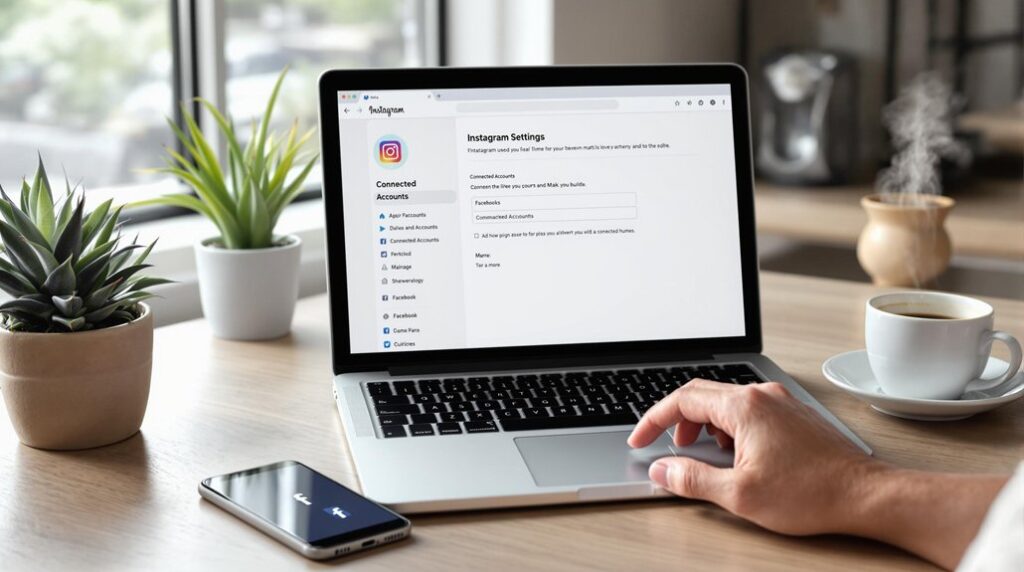Avoid targeting the wrong audience, as it wastes ad spend and lowers engagement. Guarantee high-quality visuals to prevent a 35% drop in engagement. Customize ad placements for better visibility, particularly on mobile, which most users access. A weak call-to-action can greatly reduce conversion rates—use clear, urgent language to boost click-throughs. Continuously optimize and analyze performance tracking metrics to enhance ROI. Neglecting A/B testing and personalization can decrease engagement by up to 45%. Tailor your messaging and content to specific segments for better results. These steps are crucial for effective campaigns—there's more to explore for optimizing your ads.
Key Takeaways
- Targeting the wrong audience leads to low engagement and wasted ad spend.
- Using low-quality visuals can significantly decrease ad engagement.
- Neglecting mobile optimization results in poor ad performance and reach.
- Weak call-to-actions drastically cut conversion rates.
- Ignoring ongoing ad performance analysis hampers optimization and ROI.
Targeting the Wrong Audience
Targeting the wrong audience on Facebook can lead to low engagement and wasted ad spend. With over 2.98 billion users worldwide, it's essential to get your audience targeting right. One effective way to do this is by leveraging audience insights. Facebook Ads Manager allows you to refine audience demographics, such as interests, behaviors, and demographics, to make sure your ads reach the most relevant users.
Another powerful tool at your disposal is competitive analysis. By analyzing your competitors' audiences, you can gain valuable insights that help refine your own targeting strategy. Look at the demographics and interests of users engaging with your competitors' ads. This gives you a clearer picture of what works and what doesn't in your industry.
Combining these tactics enables you to create a more precise target audience. Start by reviewing and filtering your current audience based on detailed criteria. Consistently update these parameters to reflect current data trends and audience behaviors. Doing so not only boosts engagement but also maximizes your ad spend efficiency.
Don't overlook the importance of precise targeting—it's the key to a successful Facebook advertising campaign.
Using Poor Creatives
While having the right audience is essential, using poor creatives can equally undermine your Facebook ad campaign. Low-quality visuals can lead to a 35% decrease in ad engagement. It's important to invest in high-quality design; doing so can increase click-through rates by up to 30%.
Remember, 90% of the most engaging Facebook posts include images, so image quality should be a top priority. Utilize vibrant, real customer images to boost your ad performance by 2.3 times. These authentic visuals resonate more with users and make your ads more relatable.
Workflow automation can speed up creative production by 80%, allowing you to focus on maintaining high standards without sacrificing efficiency. Equally important is brand consistency. Your ads should align with your overall brand message and visual identity. Inconsistent creatives can confuse your audience and dilute your brand's impact.
Ensure your ads reflect your brand's colors, fonts, and tone. Consistent branding not only enhances recognition but also builds trust with your audience. Ultimately, strong creatives paired with precise targeting will maximize your ad performance. Don't let poor image quality or inconsistent branding hold back your campaign's potential.
Incorrect Ad Placement
Incorrect ad placement can dramatically reduce your ad's effectiveness. Misaligned audience targeting, ignoring placement customization, and overlooking mobile optimization can result in wasted budget and lower engagement rates.
Misaligned Audience Targeting
Misaligned audience targeting can drastically reduce engagement and waste your ad budget on Facebook. By conducting a thorough audience analysis, you can guarantee your ads reach the right people. Start by leveraging Facebook Ads Manager to review and filter your target audience, aligning them with your campaign objectives.
Effective targeting strategies involve specifying demographics, interests, and behaviors that match those of your ideal customers.
Analyzing competitors' audiences can also provide valuable insights. Look at who they're targeting and how they're engaging with their ads. This information can help you refine your audience selection and avoid common pitfalls.
For instance, if your competitor's ads are resonating with a certain age group or interest category, consider incorporating similar elements into your targeting strategy.
Precision is key. Misaligned targeting means your ads could be shown to users who have no interest in your product, leading to low click-through rates and engagement. By meticulously defining your audience, you increase the likelihood of attracting potential customers, thereby improving your ad performance and ROI.
Don't let poor targeting strategies undermine your efforts—focus on alignment to maximize your results.
Ignoring Placement Customization
After verifying that your audience is properly targeted, it's equally important to tailor your ad placements for maximum engagement and ROI. Neglecting placement customization can greatly undermine your targeting strategy. Research shows that personalizing ad placements can lead to a 400% increase in engagement compared to relying on automatic placements.
Incorrect ad placement not only wastes your ad spend but also lowers your ROI, making your campaigns less effective. Facebook offers a variety of placement options like the mobile news feed, desktop news feed, and Instagram stories. Utilizing manual placement control allows you to enhance your ad visibility and performance by selecting the most effective platforms for your specific audience.
For example, if your target audience mostly uses Instagram, focusing on Instagram stories can significantly enhance your reach and engagement. Strategic placement customization helps you target specific audiences more precisely, thus maximizing your ad reach. By leveraging different placement options, you can ensure your ads appear where your audience is most active, leading to better results.
Don't let incorrect ad placement derail your well-planned targeting strategy. Take control of your ad placements and watch your engagement and ROI soar.
Overlooking Mobile Optimization
Given that over 98% of Facebook users access the platform via mobile devices, you must prioritize your ads for mobile to guarantee maximum visibility and engagement. Mobile ad design isn't just important; it's essential. If you overlook mobile optimization, you'll likely see reduced visibility and engagement, harming your campaign's effectiveness.
Incorrect ad placement can sabotage your efforts. Ads that aren't resized and tailored for mobile placements often lead to a poor user experience, causing potential customers to scroll past without a second thought. Make sure your ad creatives are designed with mobile devices in mind, featuring concise text and fast-loading images to capture user attention quickly.
Testing your ads across various mobile devices is critical. What looks good on one screen may not be effective on another. By ensuring compatibility, you enhance user experience and increase the likelihood of your ads resonating with your target audience.
Don't underestimate the power of a well-optimized mobile ad design; it can be the difference between a campaign that converts and one that falls flat. Focus on mobile optimization to maximize your ad's impact and reach.
Weak Call-to-Action
A weak call-to-action (CTA) can drastically cut your Facebook ad conversion rates.
Use clear action verbs and create a sense of urgency or scarcity to drive immediate responses.
Make sure your CTAs align with your campaign goals and offer tangible value to users.
Clear Action Verbs
Weak call-to-action verbs like 'learn more' or 'click here' result in lower conversion rates, whereas strong action verbs can greatly boost user engagement. By using specific, actionable language, you're more likely to see a substantial increase in click-through rates. Studies show that a clear and compelling call-to-action can improve your click-through rates by up to 285%.
Engaging copywriting paired with compelling visuals isn't enough if your call-to-action (CTA) is weak. Instead of generic CTAs, use powerful verbs like 'shop now,' 'get started,' or 'download today.' These verbs prompt immediate action and make your audience feel like they're missing out if they don't act.
For example, instead of saying 'click here,' say 'get your free guide now.' This approach is more direct and tells users exactly what they'll gain from clicking.
When crafting your Facebook ad, remember that your CTA is the bridge between interest and action. It's important to make every word count. By opting for strong action verbs, you make sure that your audience knows exactly what steps to take, leading to higher engagement and conversion rates.
Urgency and Scarcity
Utilizing urgency and scarcity in your call-to-action can greatly enhance your ad's conversion rates. When your call-to-action lacks urgency tactics, users are less likely to act immediately, leading to lower engagement.
Incorporating time-sensitive language such as 'Limited Time Offer' or 'Act Now' can create a sense of urgency, compelling users to take action before it's too late.
Scarcity strategies like offering a limited number of items or exclusive deals can also drive higher engagement. For example, phrases such as 'Only a few left' or 'Exclusive for the first 50 customers' can make potential buyers feel they might miss out if they don't act quickly. This fear of missing out (FOMO) can be a powerful motivator.
A strong call-to-action incorporating both urgency and scarcity elements can prompt immediate action, significantly boosting your ad performance. Data shows that ads utilizing these tactics can see a notable increase in conversion rates.
Ignoring Optimization
Overlooking ad optimization can greatly reduce engagement and waste valuable ad spend. Ad optimization strategies are vital to make sure you're getting the most out of your Facebook campaigns. By regularly analyzing performance tracking metrics, you can make data-driven decisions to tweak your ads and improve their effectiveness.
Proper optimization isn't just a one-time task; it's an ongoing process that involves monitoring and adjusting various ad elements. This practice can greatly boost your return on investment (ROI) and enhance overall campaign success. Ignoring this step means missing out on the potential to refine and enhance your ads' performance.
Here's a quick look at some key metrics to track for effective optimization:
| Metric | Importance | Actionable Insight |
|---|---|---|
| Click-Through Rate (CTR) | Measures ad engagement | Improve ad copy and visuals |
| Conversion Rate | Indicates success in achieving goals | Adjust targeting and landing pages |
| Cost Per Click (CPC) | Reflects cost-efficiency | Optimize bidding strategies |
Skipping A/B Testing
Skipping A/B testing can severely limit your ability to optimize Facebook ads effectively. Without A/B testing, you're fundamentally guessing which ad elements will perform best, leading to suboptimal ad performance.
A/B testing allows you to compare two versions of an ad, tweaking variables like images, headlines, and CTAs one at a time. This methodical approach helps you identify what resonates most with your audience.
When you conduct A/B testing, you can see significant improvements in metrics such as click-through rates (CTR) and conversion rates. For example, a simple change in a headline can make a huge difference. By knowing exactly which elements work, you can make data-driven decisions that optimize your ads for better performance.
Moreover, the insights gained from A/B testing are invaluable. They empower you to refine your strategies continuously, ensuring you maximize your return on investment (ROI).
Skipping this fundamental step means you miss out on the opportunity to enhance ad performance systematically, leading to wasted budget and lower conversion rates. In a competitive advertising landscape, A/B testing isn't just beneficial—it's vital.
Don't leave your ad success to chance; commit to A/B testing.
Not Mobile-Friendly
Given that over 98% of Facebook users access the platform via mobile devices, ensuring your ads are mobile-friendly is vital for maximizing engagement and conversion rates. If your ads aren't optimized for mobile responsiveness, you risk delivering a poor user experience, which can lead to lower engagement rates and missed opportunities.
To make your ads mobile-friendly, start by optimizing ad creatives, landing pages, and websites for mobile viewing. This means using concise text, easy navigation, and fast-loading images. Clear, succinct messaging helps users quickly grasp your offer, while intuitive navigation ensures they can interact with your content without frustration. Fast-loading images also play a critical role in maintaining user interest and preventing high bounce rates.
Moreover, testing your ads across various mobile devices is essential. Different devices may display your ads differently, affecting their overall performance. By conducting thorough testing, you can identify and fix compatibility issues, ensuring a seamless user experience across all devices.
Overlooking Personalization
Failing to personalize your Facebook ads can greatly decrease engagement and conversion rates, given that tailored content can boost click-through rates by up to 202%. Overlooking personalization is a substantial misstep; it can lead to a 45% decrease in ad engagement. Personalization benefits your campaign by making your audience feel seen and understood, which translates to higher engagement and better results.
Customized messaging is key. Personalized experiences not only capture attention but also drive action, with 80% of consumers more likely to make a purchase when they feel the content is tailored to them. This strategy can even result in a 10% increase in conversion rates and a 6x higher transaction rate than generic ads.
Consider these impactful personalization strategies:
- Segment your audience: Create specific ads for different demographic groups.
- Use dynamic content: Automatically adjust your ad content based on user data.
- Leverage retargeting: Show ads to users who've previously interacted with your brand.
- Personalize ad copy: Address your audience directly using their names or preferences.
- Utilize customer data: Incorporate past purchase history or browsing behavior into your ads.
Incorporating these personalization techniques can significantly improve the effectiveness of your Facebook ads, driving higher engagement and conversions.
Reusing Content
Reusing the same ad content can quickly lead to ad fatigue, diminishing both engagement and effectiveness. When your audience sees the same creative repeatedly, they're less likely to interact with it. Implementing content rotation is crucial to keep your audience engaged. Studies show users are more inclined to engage with fresh, varied ad creatives, which means you need to regularly update your ads to maintain interest.
To avoid ad fatigue, consider A/B testing different ad variations to see what resonates best with your target audience. This not only helps in identifying the most effective engagement strategies but also ensures that your content stays relevant and interesting. Regularly updating your ad content can greatly improve campaign performance and prevent a decrease in ROI.
Here's a quick look at the key points:
| Strategy | Benefit |
|---|---|
| Content Rotation | Prevents ad fatigue |
| Fresh Creatives | Maintains audience interest |
| A/B Testing | Identifies effective content |
| Regular Updates | Improves campaign performance |
| Diverse Engagement Strategies | Enhances user interaction |
Frequently Asked Questions
What Are the Mistakes to Avoid on Facebook?
You need to avoid poor targeting and ineffective visuals in your Facebook ads. Relying on the Boost Post button limits control and optimization. Use Facebook Business Manager for advanced targeting and better ad management to improve performance.
What Is the 20 Rule on Facebook Ads?
The 20% rule on Facebook ads limits Text Overlay to 20% of the Image Composition. Exceeding this can reduce your ad's reach and engagement. Utilize Facebook's grid tool to guarantee compliance and optimize performance.
What Words Should You Avoid When Running Facebook Ads?
Avoid clickbait phrases like "exclusive" or "limited time only" and steer clear of offensive language. Using misleading terms or controversial topics can trigger Facebook's spam filters and lower your ad reach, hurting your campaign's effectiveness.
What Are the 3 Factors That Affect Your FB Ads Success?
Your Facebook ad success hinges on audience targeting, budget allocation, and creative quality. Accurately target your audience to avoid low engagement. Allocate your budget wisely. Use high-quality visuals to capture attention and boost engagement.
Conclusion
To maximize your Facebook ad performance, avoid targeting the wrong audience, using poor creatives, and incorrect ad placement. Strengthen your call-to-action, prioritize optimization, and never skip A/B testing.
Make sure your ads are mobile-friendly and personalized. Don't fall into the trap of reusing content. By addressing these common mistakes, you'll greatly boost engagement and ROI.
Data shows that businesses implementing these strategies see a 25% increase in ad effectiveness. Make these changes today for better results!




